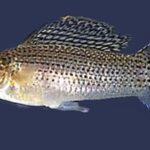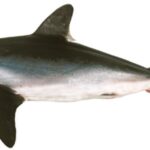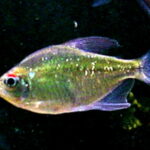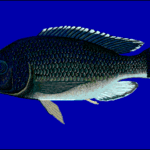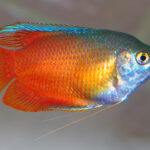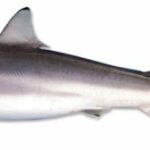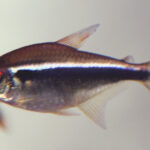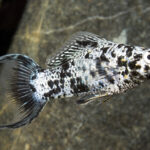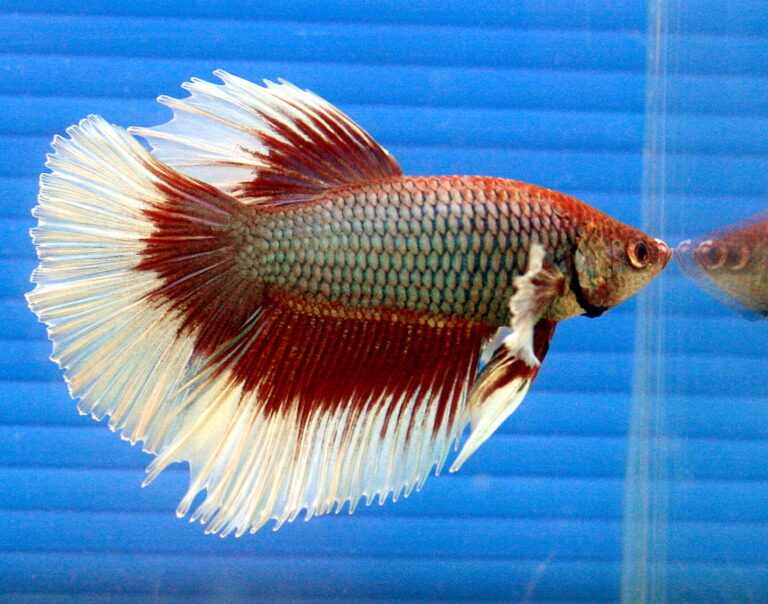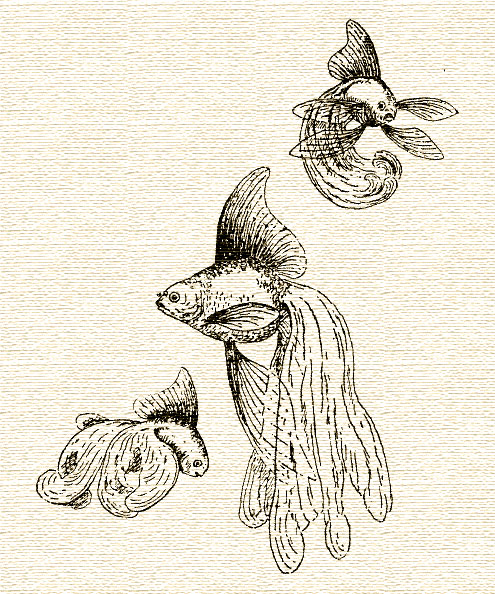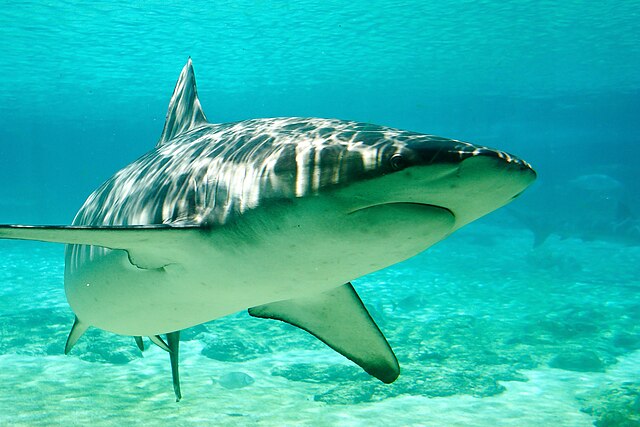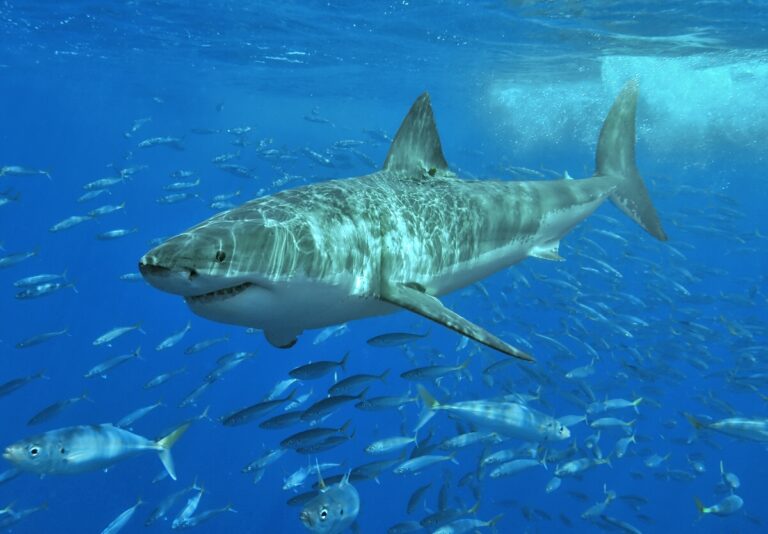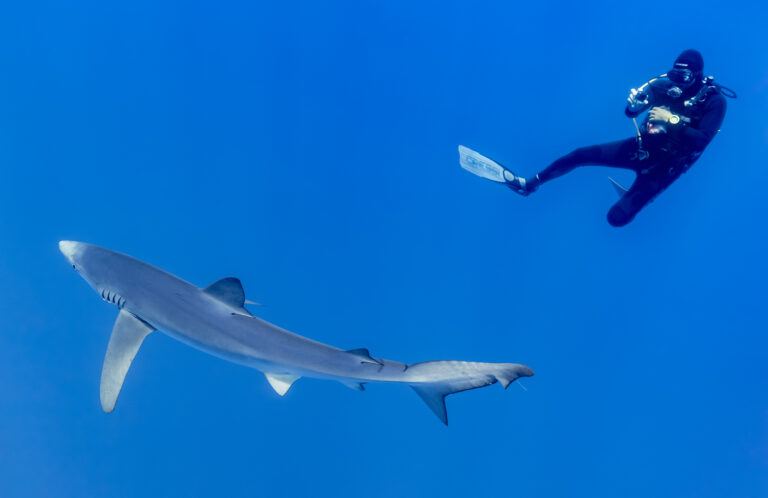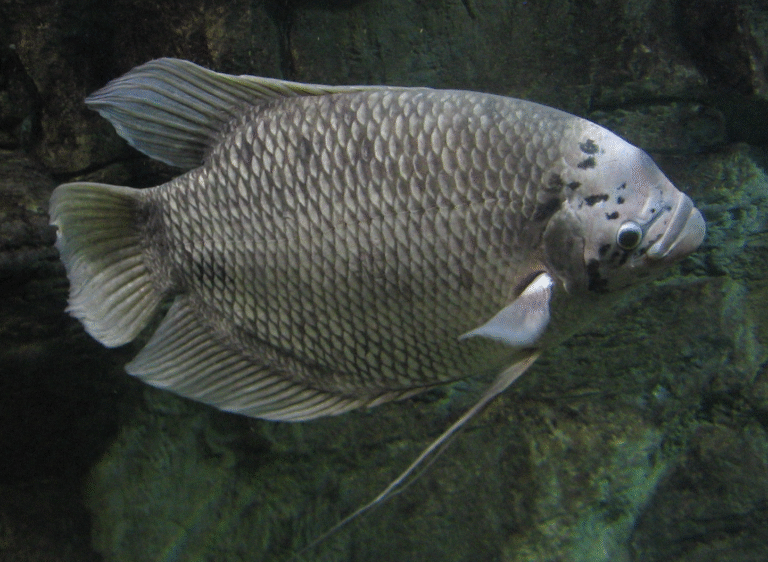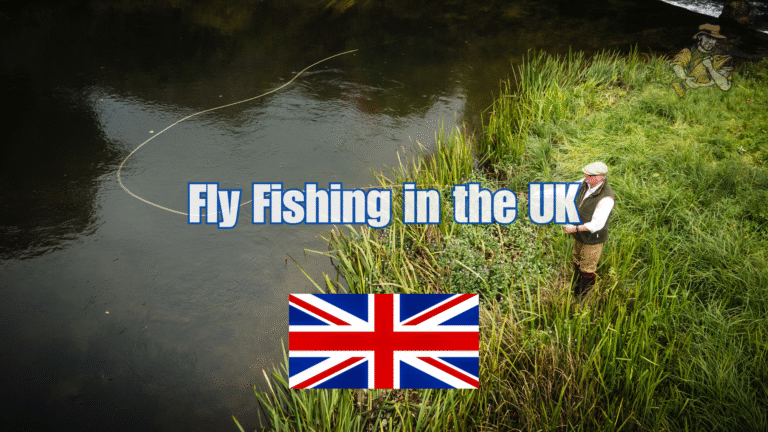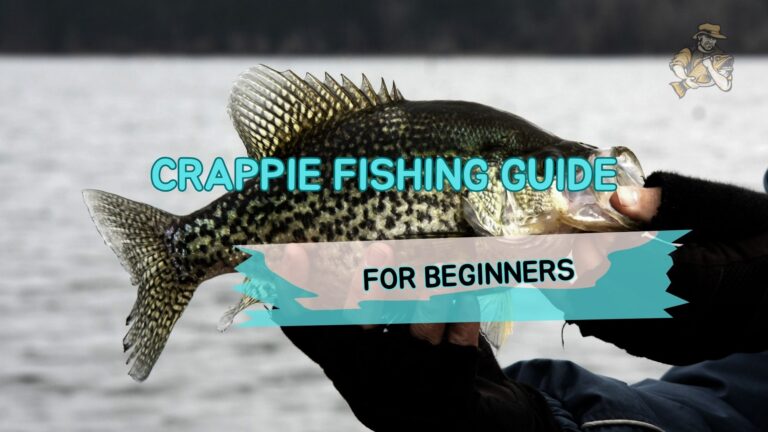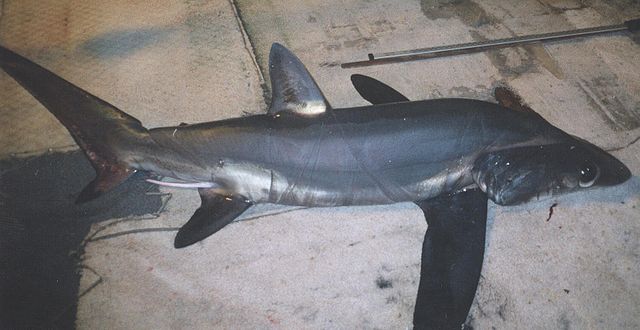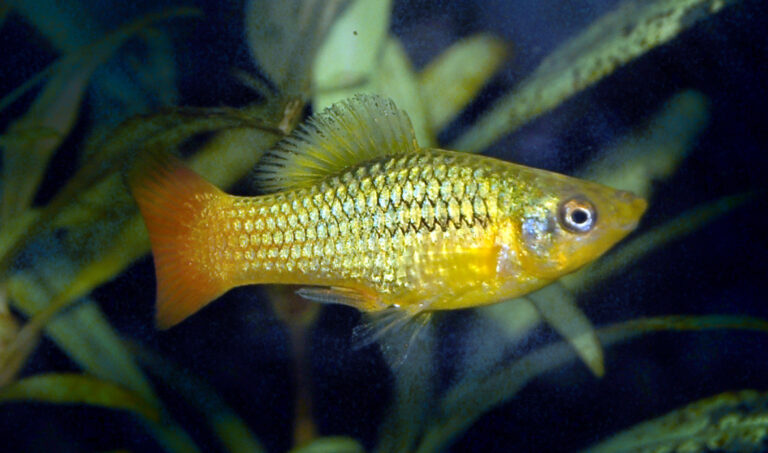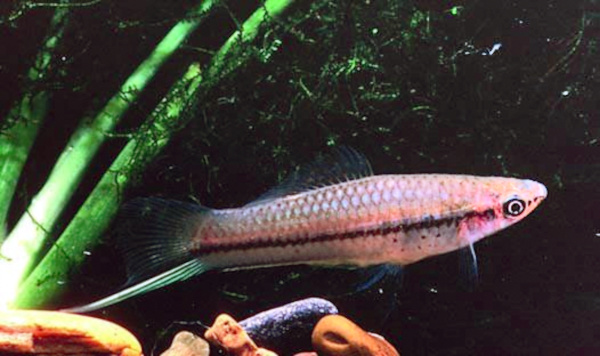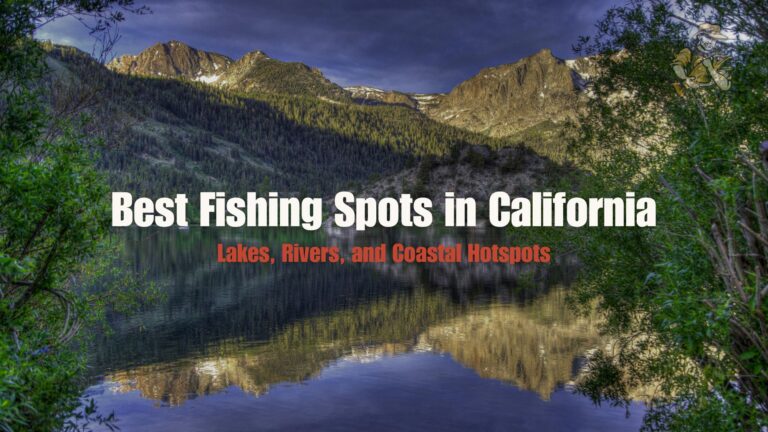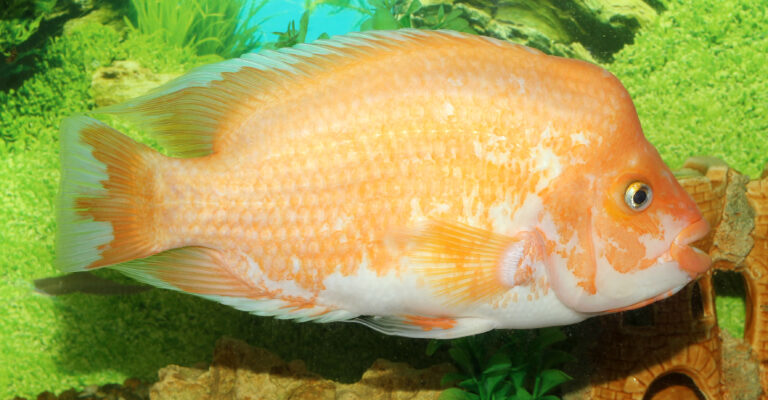Basking Shark
By Ryan Maron | Last Modified: July 11, 2025
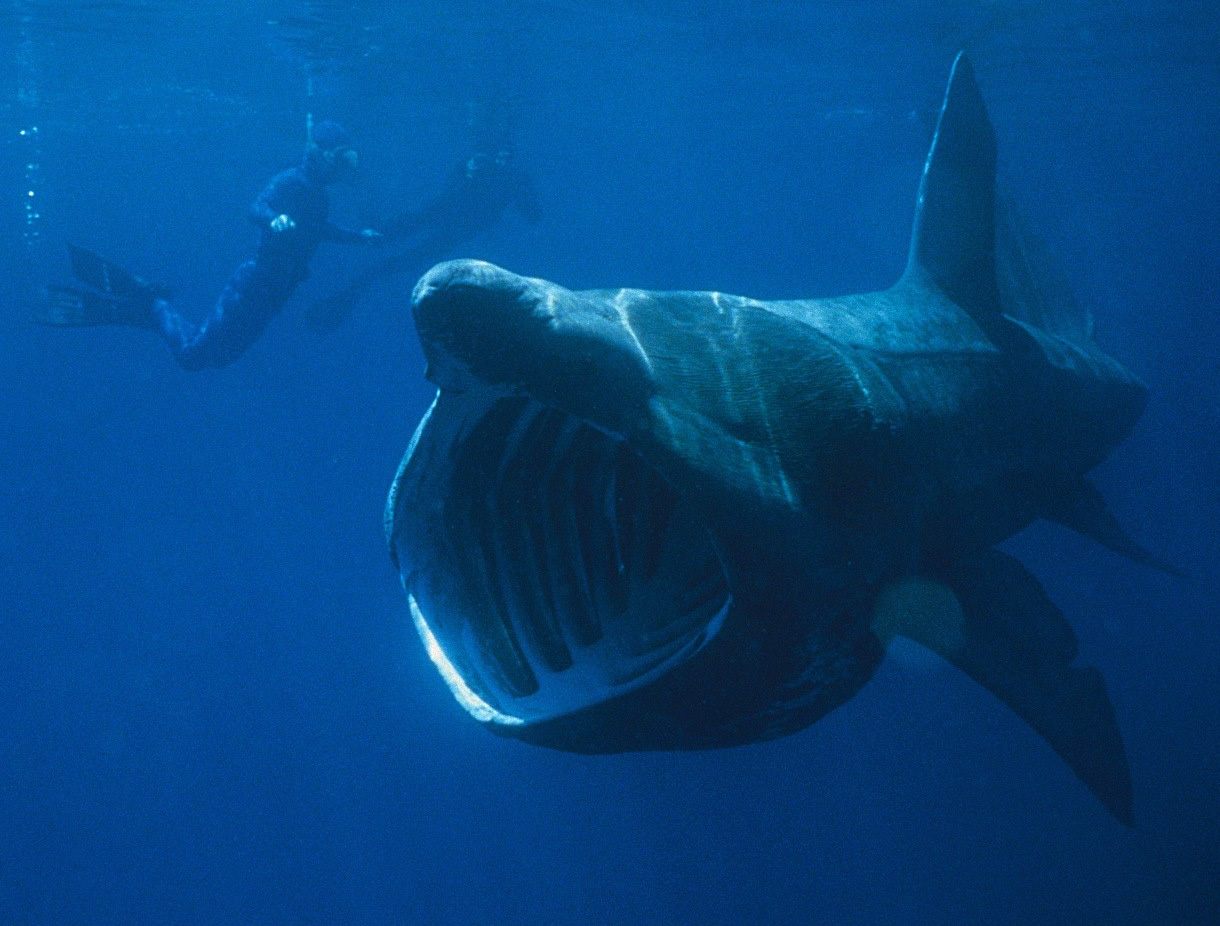
The Basking Shark stands as one of the ocean’s most magnificent gentle giants, representing the second-largest fish species on Earth. Known scientifically as Cetorhinus maximus, this remarkable filter-feeding shark captures the imagination of marine biologists and ocean enthusiasts alike through its impressive size and peaceful demeanor. Despite its massive proportions, the Basking Shark poses no threat to humans, instead dedicating its existence to consuming vast quantities of microscopic plankton and small fish.
This species plays a crucial ecological role as a major consumer of zooplankton in temperate marine ecosystems worldwide. The Basking Shark’s feeding behavior influences plankton distribution patterns and serves as an important link in oceanic food webs. Their seasonal migrations and aggregation behaviors make them valuable indicators of marine ecosystem health, while their vulnerability to human activities has made them a focal point for marine conservation efforts.
| Feature | Details |
|---|---|
| Common Name | Basking Shark |
| Scientific Name | Cetorhinus maximus |
| Family | Cetorhinidae |
| Typical Size | 6-8 meters (20-26 feet), up to 5,000 kg |
| Habitat | Temperate coastal and oceanic waters |
| Diet | Zooplankton, small fish, filter feeder |
| Distribution | Worldwide in temperate waters |
| Conservation Status | Endangered (IUCN Red List) |
Taxonomy & Classification
The Basking Shark belongs to the order Lamniformes, which includes many of the world’s most recognizable shark species. Within this order, Cetorhinus maximus represents the sole member of the family Cetorhinidae, making it taxonomically unique among filter-feeding sharks. This classification distinguishes it from other large filter-feeding species like the whale shark, which belongs to the entirely different family Rhincodontidae.
The species name “maximus” appropriately reflects its massive size, while the genus name “Cetorhinus” derives from Greek words meaning “whale nose,” referencing its distinctive snout shape. First described scientifically by Gunnerus in 1765, the Basking Shark has undergone various taxonomic revisions as researchers have gained deeper understanding of its evolutionary relationships.
Molecular studies have revealed that the Basking Shark shares ancestry with other mackerel sharks, including the great white shark and various mako species. However, its specialized feeding apparatus and behavioral adaptations have led to significant morphological divergence from its predatory relatives. The species shows no recognized subspecies, though genetic analysis suggests some population structure across different ocean basins.
The evolutionary history of Cetorhinus maximus extends back approximately 30 million years, with fossil evidence indicating that similar filter-feeding sharks existed during the Oligocene epoch. This long evolutionary timeline has allowed for the development of highly specialized feeding mechanisms that distinguish the Basking Shark from other members of its order.
Physical Description
The Basking Shark exhibits a distinctive fusiform body shape optimized for efficient swimming through plankton-rich waters. Adults typically reach lengths of 6 to 8 meters, though exceptional specimens have been recorded at lengths exceeding 10 meters. The species displays significant sexual dimorphism, with females generally growing larger than males and capable of reaching weights of up to 5,000 kilograms.
The most striking feature of the Basking Shark is its enormous mouth, which can extend up to 1.5 meters wide when fully opened for feeding. This cavernous opening houses hundreds of tiny, hooked teeth arranged in multiple rows, though these teeth play no role in feeding and are believed to be vestigial structures from predatory ancestors. The gill slits extend nearly from the dorsal surface to the ventral surface of the head, creating an almost complete encirclement that maximizes water flow during filter feeding.
Coloration varies from dark gray to brownish-black on the dorsal surface, with a lighter gray or white ventral coloration providing effective counter-shading. The skin texture appears rough due to the presence of numerous dermal denticles, which reduce drag during swimming. Many individuals display distinctive white markings or scars, often resulting from encounters with boats, parasites, or other sharks.
The dorsal fin maintains a triangular shape typical of many shark species, but the Basking Shark’s tail exhibits a distinctive heterocercal form with the upper lobe significantly longer than the lower lobe. This tail structure, combined with the species’ large pectoral fins, provides excellent stability during the slow swimming speeds necessary for effective filter feeding. The snout appears conical and pointed, housing sensory organs that help locate plankton concentrations in the water column.
Habitat & Distribution
Basking Sharks inhabit temperate and boreal waters throughout the world’s oceans, demonstrating a global distribution pattern that reflects their dependence on seasonal plankton blooms. They prefer water temperatures ranging from 8 to 14 degrees Celsius, which corresponds to the optimal temperature range for their preferred zooplankton prey. This temperature preference drives their extensive seasonal migrations between feeding and breeding areas.
The species occurs in both coastal and oceanic environments, though they are most commonly observed in nearshore waters during spring and summer months when plankton concentrations peak. Major aggregation areas include the waters off the British Isles, the northeastern United States, the Pacific Northwest, and various locations around the Southern Hemisphere including New Zealand and South Africa.
Basking Sharks demonstrate remarkable vertical migration patterns, moving between surface waters during feeding periods and deeper waters at other times. Satellite tracking studies have revealed that individuals can dive to depths exceeding 900 meters, though the reasons for these deep dives remain partially understood. Some researchers suggest these movements may be related to following prey distributions or thermoregulatory behavior.
The species shows strong site fidelity to specific feeding areas, with individuals returning to the same locations year after year. This predictable behavior has made certain areas important for both scientific research and ecotourism, but it also increases the species’ vulnerability to localized threats. Climate change and shifting ocean temperatures are beginning to affect traditional distribution patterns, with some populations showing altered migration routes and timing.
Juvenile Basking Sharks often inhabit different areas than adults, with smaller individuals more commonly found in sheltered coastal waters and bays. This habitat segregation may reduce competition for food resources and provide protection from larger predators during vulnerable early life stages.
Diet & Feeding Behavior
The Basking Shark employs a highly specialized filter-feeding strategy that ranks among the most efficient in the marine environment. Their diet consists primarily of zooplankton, with copepods forming the bulk of their nutritional intake. During peak feeding periods, a single individual can filter up to 2,000 tons of water per hour, extracting millions of tiny organisms from the water column.
The feeding mechanism involves swimming slowly through plankton-dense waters with the mouth held wide open, allowing water to flow over specialized gill rakers that trap prey items. These gill rakers consist of hundreds of bristle-like structures that act as a biological sieve, preventing plankton from escaping through the gill slits while allowing water to pass through freely. The trapped organisms are then swallowed in concentrated masses.
Feeding behavior shows strong seasonal variation, with peak activity occurring during spring and summer months when zooplankton blooms are most abundant. During these periods, Basking Sharks may aggregate in large numbers, sometimes forming groups of several hundred individuals in areas of exceptional prey density. These aggregations represent some of the most spectacular wildlife gatherings in the marine environment.
The species demonstrates remarkable ability to locate productive feeding areas, often appearing at plankton blooms shortly after they develop. This suggests sophisticated sensory capabilities for detecting chemical cues associated with high prey concentrations. Recent research has revealed that Basking Sharks can detect and respond to changes in water temperature and salinity that indicate favorable feeding conditions.
During winter months, feeding activity decreases significantly, and many individuals enter a period of reduced activity. Some researchers hypothesize that Basking Sharks may undergo a form of hibernation during these periods, though this remains an active area of scientific investigation. The species’ ability to fast for extended periods allows them to survive seasonal fluctuations in prey availability.
Behavior & Adaptations
Basking Sharks exhibit complex behavioral patterns that reflect their specialized ecological niche as filter-feeding giants. Their most characteristic behavior involves the slow, methodical swimming at the surface that gives the species its common name. This surface swimming, or “basking,” behavior serves multiple functions including thermoregulation, feeding, and possibly social interaction.
The species demonstrates remarkable navigational abilities, with satellite tracking revealing precise migration routes spanning thousands of kilometers. These migrations appear to be synchronized with seasonal plankton cycles, suggesting sophisticated environmental sensing capabilities. Individual sharks often follow similar routes year after year, indicating strong spatial memory and navigation skills.
Social behavior in Basking Sharks is more complex than previously understood, with individuals showing preferences for specific companions and maintaining associations over extended periods. During feeding aggregations, individuals display coordinated swimming patterns that may increase feeding efficiency through collective water movement. Some groups exhibit synchronized diving behavior, suggesting communication mechanisms that remain poorly understood.
The species shows remarkable behavioral flexibility in response to environmental conditions. During periods of low prey abundance, individuals may switch to deeper water feeding or alter their swimming patterns to maximize encounter rates with plankton patches. This adaptability has likely contributed to their evolutionary success in variable marine environments.
Basking Sharks demonstrate curious behavior toward boats and divers, often approaching closely without showing signs of fear or aggression. This docile nature has made them popular subjects for wildlife viewing, though it also increases their vulnerability to boat strikes and other human-related injuries. Their slow swimming speed and surface-oriented behavior make them particularly susceptible to vessel collisions.
The species exhibits unique adaptations for their filter-feeding lifestyle, including specialized gill rakers that can be shed and replaced seasonally. This adaptation allows them to maintain optimal feeding efficiency as prey sizes change throughout the year. Their large liver, which can account for up to 25% of their body weight, provides buoyancy control and energy storage for periods when feeding opportunities are limited.
Reproduction & Life Cycle
The reproductive biology of Basking Sharks remains one of the most poorly understood aspects of their life history, largely due to the difficulty of observing breeding behavior in these highly mobile, oceanic species. What is known suggests an extremely slow reproductive cycle with correspondingly low reproductive output, making population recovery challenging following declines.
Sexual maturity occurs at an estimated age of 12 to 16 years, when individuals reach lengths of approximately 4 to 6 meters. This late maturation represents one of the slowest rates among shark species and contributes significantly to the species’ vulnerability to overexploitation. The extended juvenile period requires individuals to survive numerous threats before contributing to population reproduction.
Basking Sharks are ovoviviparous, meaning eggs develop internally and young are born live. The gestation period is estimated to last 2 to 3 years, representing one of the longest pregnancy periods known among sharks. Females typically give birth to 2 to 6 pups, though litter sizes may vary based on female size and environmental conditions.
Mating behavior has rarely been observed in wild populations, though courtship activities appear to involve multiple males pursuing a single female. Some observations suggest that mating may occur in specific geographic areas during certain seasons, though the precise timing and location of breeding grounds remain largely unknown. The species may follow traditional mating sites similar to other migratory marine species.
Newborn Basking Sharks measure approximately 1.5 to 2 meters in length, making them among the largest newborn sharks. Despite their substantial size at birth, juveniles face significant predation pressure from larger sharks and marine mammals. The extended parental investment represented by the long gestation period is offset by the complete independence of young sharks immediately after birth.
The reproductive cycle of Basking Sharks may be influenced by environmental factors including water temperature and prey availability. Females likely require substantial energy reserves to support the extended gestation period, which may explain why reproductive success appears linked to feeding success in previous years. This connection between feeding and reproduction makes the species particularly vulnerable to environmental changes that affect prey availability.
Predators & Threats
Adult Basking Sharks face few natural predators due to their massive size, though juveniles and smaller individuals may fall prey to great white sharks, tiger sharks, and large marine mammals including killer whales. Predation events on adult Basking Sharks are extremely rare, though evidence suggests that killer whales may occasionally target smaller individuals, particularly in areas where both species overlap.
The primary threats to Basking Shark populations stem from human activities rather than natural predation. Historically, commercial fisheries targeted these sharks for their liver oil, which was highly valued for its vitamin content and industrial applications. This exploitation led to severe population declines throughout their range, with some regional populations showing reductions of over 80% during the 20th century.
Modern threats include incidental capture in fishing operations, particularly in gillnets and longlines set for other species. Their large size and slow swimming speed make Basking Sharks particularly vulnerable to entanglement in fishing gear. Even when released alive, individuals may suffer injuries that affect their long-term survival and reproductive success.
Vessel strikes represent an increasingly significant threat as boat traffic increases in coastal waters where Basking Sharks feed. Their habit of swimming at the surface makes them particularly vulnerable to collisions with fast-moving vessels. Propeller injuries are commonly observed on photographed individuals, indicating that boat strikes are a frequent occurrence.
Climate change poses emerging threats through alterations to ocean temperature and plankton distribution patterns. As their preferred prey species shift in response to changing conditions, Basking Sharks may be forced to alter migration patterns or face reduced feeding success. Ocean acidification may also affect the copepod populations that form the base of their diet.
Marine pollution, including plastic debris and chemical contaminants, represents an additional threat category. Filter-feeding behavior makes Basking Sharks particularly susceptible to ingesting microplastics and other pollutants that accumulate in plankton-rich waters. The long-term effects of these contaminants on shark health and reproduction remain poorly understood but are cause for concern.
Conservation Status
The International Union for Conservation of Nature (IUCN) classifies the Basking Shark as Endangered on the Red List of Threatened Species, reflecting significant population declines and ongoing threats throughout their global range. This classification represents an upgrade from the previous Vulnerable status, indicating that conservation concerns have intensified as more data has become available about population trends.
Population assessments are challenging due to the species’ highly migratory nature and the difficulty of conducting comprehensive surveys across their vast range. However, available data suggests that many regional populations have experienced severe declines, with some areas showing reductions of 80% or more compared to historical levels. The northeastern Atlantic population, once the largest known aggregation, has shown particularly concerning decline trends.
Conservation efforts have included the establishment of protected areas in key feeding and aggregation sites, though the effectiveness of these measures is limited by the species’ transnational movements. International cooperation is essential for effective conservation, as individual sharks may traverse multiple exclusive economic zones during their annual migrations. The species is listed on Appendix II of the Convention on International Trade in Endangered Species (CITES), regulating international trade.
Several countries have implemented specific protection measures for Basking Sharks, including fishing prohibitions and requirements for immediate release if captured incidentally. The European Union has banned targeted fishing for the species and requires member states to implement conservation measures. Similar protections exist in United States waters, where the species is protected under the Endangered Species Act in some regions.
Research programs focusing on population assessment, migration patterns, and habitat requirements are providing essential information for conservation planning. Satellite tagging studies have revealed previously unknown aspects of their behavior and distribution, informing the design of more effective protection measures. Citizen science programs involving wildlife watchers and tour operators contribute valuable data on distribution and abundance trends.
The species’ slow reproductive rate and late maturation make population recovery a lengthy process even with effective conservation measures. This biological constraint emphasizes the importance of preventing further population declines rather than relying on population recovery programs. Continued monitoring and adaptive management strategies are essential for ensuring the long-term survival of this remarkable species.
Human Interaction
Basking Sharks have maintained a complex relationship with human societies throughout history, ranging from exploitation to conservation to ecotourism. Traditional fisheries in regions such as Ireland, Scotland, and Norway targeted these sharks for their valuable liver oil, which was used for lamp fuel, leather processing, and medicinal purposes. These fisheries operated for centuries before declining in the mid-20th century due to the development of synthetic alternatives and depleted shark populations.
The species’ docile nature and surface-swimming behavior have made them popular subjects for wildlife viewing and ecotourism. Boat-based tours to observe Basking Sharks generate significant economic benefits for coastal communities, particularly in areas where the sharks aggregate predictably. These tourism activities provide economic incentives for conservation while raising public awareness about the species’ ecological importance.
Scientific research on Basking Sharks has expanded dramatically in recent decades, with satellite tagging programs revealing unprecedented details about their movements and behavior. These studies have transformed understanding of the species’ ecology and have informed conservation strategies. International collaboration between researchers has been essential for studying a species that crosses multiple national boundaries.
The species occasionally appears in commercial fisheries as bycatch, though most modern fisheries have implemented measures to reduce incidental capture. When sharks are accidentally caught, best practice guidelines recommend immediate release using specialized techniques that minimize stress and injury. Training programs for fishermen have improved survival rates for accidentally captured individuals.
Basking Sharks play important roles in marine ecosystems as both consumers and nutrient transporters. Their feeding activities help control zooplankton populations, while their movements between feeding and breeding areas transport nutrients across ocean basins. These ecological functions have broader implications for marine productivity and ecosystem stability.
Public interest in Basking Sharks has grown significantly, driven by their impressive size, gentle nature, and conservation needs. Educational programs highlighting their ecological importance have contributed to increased support for protection measures. The species has become a flagship species for marine conservation, helping to promote broader awareness of ocean conservation issues.
Interesting Facts
The Basking Shark holds several remarkable distinctions that set it apart from other marine species. As the second-largest fish in the world, only the whale shark exceeds it in size, yet the Basking Shark’s more robust build often makes it appear equally impressive. Their massive liver can contain up to 400 gallons of oil, historically making them extremely valuable to commercial fisheries.
Despite their enormous size, Basking Sharks are capable of impressive athletic displays, including breaching behavior where individuals launch themselves completely out of the water. The purpose of this behavior remains debated, with theories including parasite removal, communication, or play behavior. These spectacular displays can involve sharks weighing several tons leaving the water entirely.
The species demonstrates remarkable longevity, with some individuals estimated to live over 50 years. This extended lifespan, combined with their slow reproductive rate, means that individual sharks represent significant investments in population sustainability. Each mature female may produce only a few dozen offspring during her entire lifetime.
Basking Sharks possess unique adaptations for their filter-feeding lifestyle, including gill rakers that can be shed and regrown seasonally. This adaptation allows them to adjust their feeding apparatus to match changing prey sizes throughout the year. During winter months, some individuals may shed their gill rakers entirely, supporting theories about seasonal feeding cessation.
The species exhibits remarkable migration abilities, with satellite tracking revealing journeys spanning entire ocean basins. Some individuals have been tracked traveling over 9,000 kilometers, demonstrating navigation capabilities that remain poorly understood. These migrations often involve precise timing with seasonal plankton blooms, suggesting sophisticated environmental sensing abilities.
Basking Sharks show surprising social complexity, with some individuals maintaining associations over multiple years. Photo identification studies have revealed that some sharks show preferences for specific companions and may coordinate their movements over vast distances. This social behavior challenges traditional views of sharks as solitary animals.
The species has an unusual relationship with parasites, hosting several species found nowhere else. Some of these parasites may actually benefit the sharks by consuming dead tissue or providing cleaning services. The large copepod Pandarus bicolor is commonly seen attached to Basking Sharks and has become an iconic sight for wildlife observers.
Conclusion
The Basking Shark represents one of the ocean’s most remarkable species, combining impressive size with specialized feeding adaptations that have evolved over millions of years. Their role as major consumers of zooplankton makes them essential components of marine ecosystems, while their vulnerability to human activities underscores the need for continued conservation efforts. As climate change and human pressures continue to affect marine environments, protecting these gentle giants becomes increasingly critical for maintaining ocean ecosystem health and preserving one of nature’s most extraordinary filter-feeding specialists.
Share The Article:
More Fish Species:
-
Half Moon Betta
The Half Moon Betta (Betta splendens) represents one of the most distinctive and sought-after varieties within the Siamese fighting…
-
Veiltail Goldfish
The Veiltail Goldfish stands as one of the most distinctive and graceful varieties within the goldfish family, renowned for…
-
Dusky Shark
The Dusky Shark represents one of the most ecologically significant yet vulnerable large predators inhabiting coastal and pelagic waters…
-
Great White Shark
The Great White Shark (*Carcharodon carcharias*) stands as one of the ocean’s most formidable apex predators, commanding respect and…
-
Blue Shark
The Blue Shark (Prionace glauca) represents one of the ocean’s most accomplished travelers, traversing entire ocean basins in epic…
-
Giant Gourami
The Giant Gourami (Osphronemus goramy) represents one of the most remarkable freshwater fish species in Southeast Asia, distinguished by…
Discover
-
Why Stoner Fish Catch is Different: Unusual Angling Tactics
Let’s face it – some fish just act plain weird. Whether you’re an experienced angler or just starting out,…
-
Fly Fishing in the UK: Top Rivers and Seasonal Patterns
After nearly three decades casting flies across waters from Michigan to Maine – and now spending several weeks each…
-
7 Best Family-Friendly Fishing Destinations in the U.S. (Tested with Kids!)
I still remember the first time I took my son Tommy fishing. He was five, armed with a Spider-Man…
-
Yellowfin VS Bluefin Tuna: Which Should You Target? (Expert Guide)
Let’s be honest – the first time I saw a yellowfin and bluefin tuna side by side at the…
-
Crappie Fishing Guide for Beginners | 2025
Crappie fishing might just be one of the most rewarding experiences for new anglers. These popular panfish are abundant,…
-
Bigeye Thresher Shark
The Bigeye Thresher Shark represents one of the ocean’s most extraordinary predators, distinguished by its dramatically elongated tail fin…
Discover
-
Variable Platyfish
The Variable Platyfish (Xiphophorus variatus) stands as one of the most widely recognized and ecologically significant freshwater fish species…
-
Marigold Swordtail
The Marigold Swordtail (Xiphophorus hellerii var. marigold) stands as one of the most vibrant and sought-after color variants within…
-
Green Swordtail
The Green Swordtail (Xiphophorus hellerii) represents one of the most recognizable and ecologically significant freshwater fish species in both…
-
Best Fishing Spots in California: Lakes, Rivers, and Coastal Hotspots
California fishing has always struck me as a study in beautiful contradictions. From snow-fed alpine lakes to sweltering desert…
-
Midas Cichlid
The Midas Cichlid (Amphilophus citrinellus) stands as one of Central America’s most recognizable and ecologically significant freshwater fish species….
-
Stonecat
The Stonecat (Noturus flavus) represents one of North America’s most distinctive freshwater catfish species, serving as a crucial indicator…

